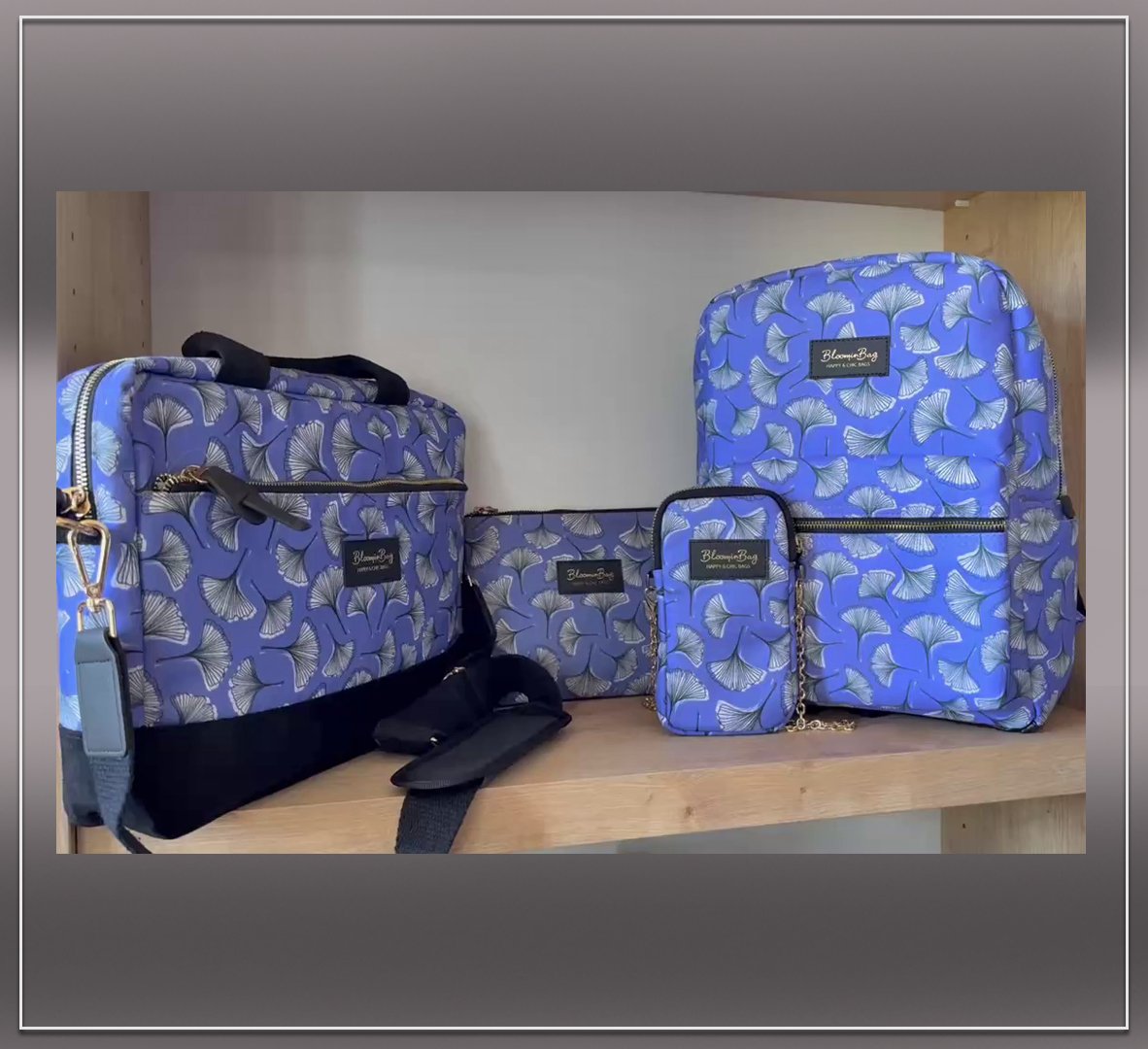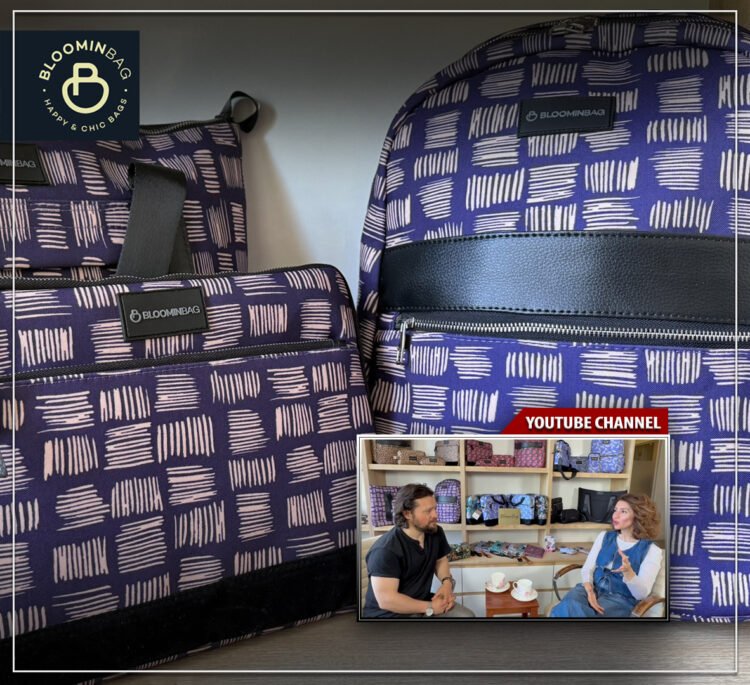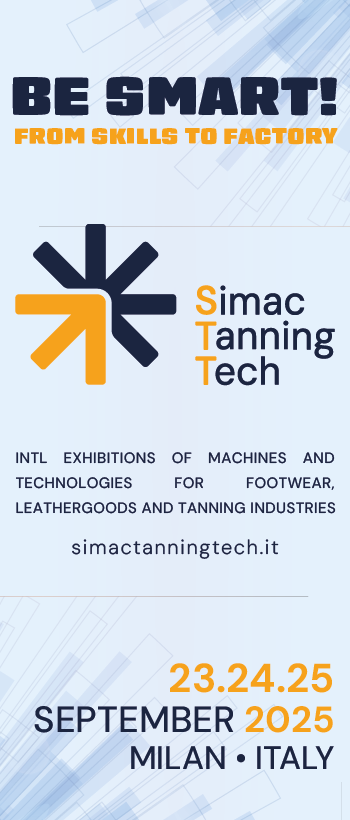EDITOR: Mrs. Neslihan, since you serve the textile sector, we would like to get to know you.
Of course. Hello. Thank you for the invitation interview, Mr. Alparslan.
I am Neslihan Kılıç Hacıalioğlu, founder of the BLOOMIN BAG brand. BLOOMIN BAG is a Turkish brand that produces happy, stylish, and eco-friendly bags. We are an eight-year-old brand, now entering our ninth year. All our processes — design, material sourcing, supply, production, and sales — are carried out in Türkiye.
If you like, I can first talk a little about myself, then continue with the brand. I’m from Ankara. I grew up as the child of an idealist civil servant family, and my only dream was to study at the business faculty — which was a popular field at the time — and become a top-level executive in a corporate company.
After university, I first worked at a corporate bank in areas like sales, marketing, and financial management. I worked there for about three years. Later, to be honest, finance felt a bit too corporate for me. I wanted to do something a little more hands-on with life. But of course, you can’t just suddenly quit and jump into entrepreneurship.
So while still in finance, I moved to another financial institution — but one with a more retail-oriented side, focusing on brand management and brand consultancy, managing the relationships and campaigns with major brands. There, I had the chance to get to know the market, the sector — especially the textile sector, fashion, and its dynamics — at least to some extent.
This actually added marketing and brand management experience on top of my financial background from the previous job. After working there for about three to four years, I then worked in brand management for one of Türkiye’s leading corporate companies. And for about ten years, the journey continued like this.
Over those ten years, I learned a great deal in the corporate world. Because — as we will talk about later — building and managing a brand isn’t just about the design side or the PR you see on the surface; it’s also about managing it financially, managing the supply chain when needed, and determining the entire marketing strategy — it’s a business with many wide-ranging aspects. So, without realizing it, the corporate experience gradually prepared me for where I am now.
After working in these places for ten years, and already having the desire to start my own business, I was constantly searching for what exactly I could do. As a business graduate working in a corporate structure, I didn’t have a niche profession or a family business to inherit. I was constantly wondering, “What will I do? What kind of business can I start?”
At that point, due to a family health issue, I had to freeze my corporate job for about two and a half years. By “freeze,” I mean I took unpaid leave — initially for three months, thinking I would return after that period. But three months became another three months, and so on, until it extended into an open-ended two and a half years.
After this long break, when they said, “Come back now,” I honestly didn’t have the motivation or enthusiasm to return. I wanted to do something different — something more meaningful, both for humanity and for myself, and aligned with my purpose in life.
During this period, I started my first entrepreneurial journey with bee products, which I had come across during that health phase. I created a brand for bee products and began selling it in Türkiye. This was before the pandemic — around 2012 — when e-commerce was just starting to take off in Türkiye. I dove straight into e-commerce and learned it firsthand.
You go from being a white-collar employee to entering trade, and here you are stepping into the honey sector. Quite an interesting journey. Of course, after that comes the textile sector…
Correct… Exactly so…
It’s actually a very interesting entrepreneurial story; please continue…
Great…
Yes, I would like to explain that transition a bit. In the honey and bee products business, I was buying from a producer, branding it under my own name, and trying to sell it. However, after experiencing some supply problems, I realized something: branding is extremely important and indispensable, but if you face issues at the supply stage, all your branding efforts go to waste.
So I wanted to create a business where I wouldn’t have supply or production problems — where I could manage these aspects myself. This search took me all the way to Korea.
It really is an interesting journey…
It truly is…
As they say, “Go where the road takes you,” I let the wind carry me along.
The road took me to Korea. At that time, I went to our factory in Korea to oversee production for an American-Turkish partnership company we were working with. It was my first time experiencing a production process I had never known before. I got to see the entire journey of a product — from raw materials to the shelves — not just the design stage we do at a desk. This gave me valuable experience.
My business connection with Korea continued, and I began to explore which products I could have manufactured there and then sell and brand in Türkiye or anywhere in the world — the U.S., or other countries. One of the sample products I was drawn to was Korean textile fabrics I really liked. And this takes me back to my white-collar office life.
During my time working in corporate offices, we women dressed very elegantly — bags, shoes, skirt suits, and so on. But when we went to meetings, the laptop bags given to us by companies were all black, identical, and felt overly masculine.
At that time, I wanted to buy and use a more feminine laptop bag, but I couldn’t find one in Türkiye. I found myself wondering why — in a country where the textile industry is so advanced, where working women are so prominent, and where women spend on themselves and their needs — such an important women’s need didn’t exist in the market.
So that’s where the idea began. The entire entrepreneurial journey was born from a need…
Yes, that’s exactly right…
Almost all entrepreneurial stories begin from one’s own need — either to bring something to the market that doesn’t exist or to make something that exists better.
That’s how it was for me, too. But at the time, it was nothing more than a dream, because I knew nothing — not about fabrics, fashion, design, or trade. So it stayed as a sweet dream tucked away in my mind: “I wish it existed. Could I do it?”
Once my entrepreneurial journey started with bee products, and I gained experience in production in Korea, trying out different products from different sectors, I came across those fabrics I liked in Korea and thought: “I could make laptop bags from these fabrics — bags that reflect women’s joy, color, and vibrancy.” That’s when the idea on paper began to take shape, and I slowly set off on that path.
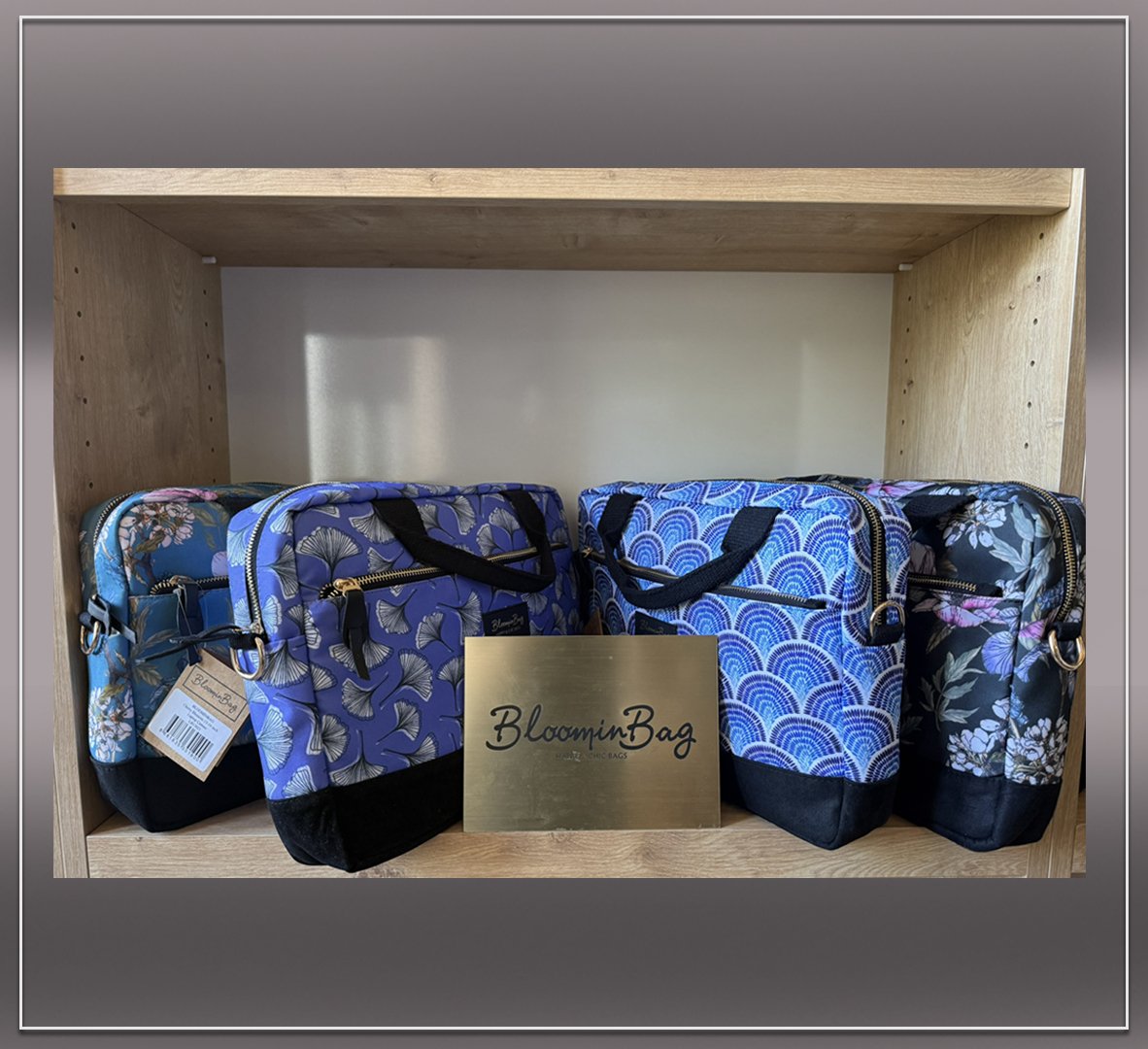 EDITOR: Could you tell us about your brand? How did BLOOMIN BAG come about?
EDITOR: Could you tell us about your brand? How did BLOOMIN BAG come about?
Yes, of course… As I mentioned, I received fabric samples from Korea. When I matched those fabrics with the product I had once dreamed about in my office days, I thought I could create something much needed and not available in Türkiye. Initially, I wanted to have the entire product manufactured in Korea and import it as a finished product into Türkiye.
However, the taxes, customs duties, financial costs, and operational processes involved in importing were too challenging for someone starting a new business. I didn’t want to take those risks — and in hindsight, I think it was the right decision. Still, I was convinced the product would succeed in Türkiye, so I began exploring how to manufacture it locally.
At first, I wanted to set up my own workshop. I met with women in sewing courses to try to have samples made. But I realized that the quality and depth I wanted couldn’t be achieved with just a few women and a standard sewing machine. It required professional workshops, because we were creating the brand from scratch — designing the patterns, producing exclusive fabrics, cutting them, making models, creating molds, and using different machines and materials at various production stages.
So we turned to professional workshops. Finding the right one in Türkiye took nearly a year. When you start, production quantities are small, and without large capital, you can’t risk big runs. We tried to create maximum quality in small batches for a market unfamiliar with this product.
In the beginning, workshop masters would ask: “Why are you doing this? Laptop bags are black. That’s how it’s done — black means seriousness, it’s for the workplace.” I kept hearing, “Why pink? Why floral?” But I believed in the product and kept going until I found a workshop that shared my belief.
Once we had our first production, Kanyon Shopping Mall connected us with a Turkish brand that loved our products and placed them in their store. That same day, major brands like TURKCELL, D&R, and BOYNER came knocking. We began mass production and proudly became the first brand in Türkiye to make colorful, patterned laptop bags for women. We entered big markets and started selling nationwide and online. Then the pandemic hit.
During the pandemic, like everyone else, we froze for a while because we didn’t know what would happen. Our main product was bags — specifically, bags used for commuting to and from the office. Once office work stopped and everyone stayed home, the need for such bags disappeared, albeit only briefly.
Soon, with the sudden boom in online work and schooling, the number of laptops at home increased from one to two, three, even four — depending on the number of family members. This created a demand, not so much for bags, but for protective sleeves. Suddenly, our production shifted from bags to sleeves, and sales rose sharply.
That’s how we got through the pandemic. Afterward, we continued to grow. Today, we have stores on all major online marketplaces in Türkiye, and our products are also available in major retailers like BOYNER and BEYMEN.
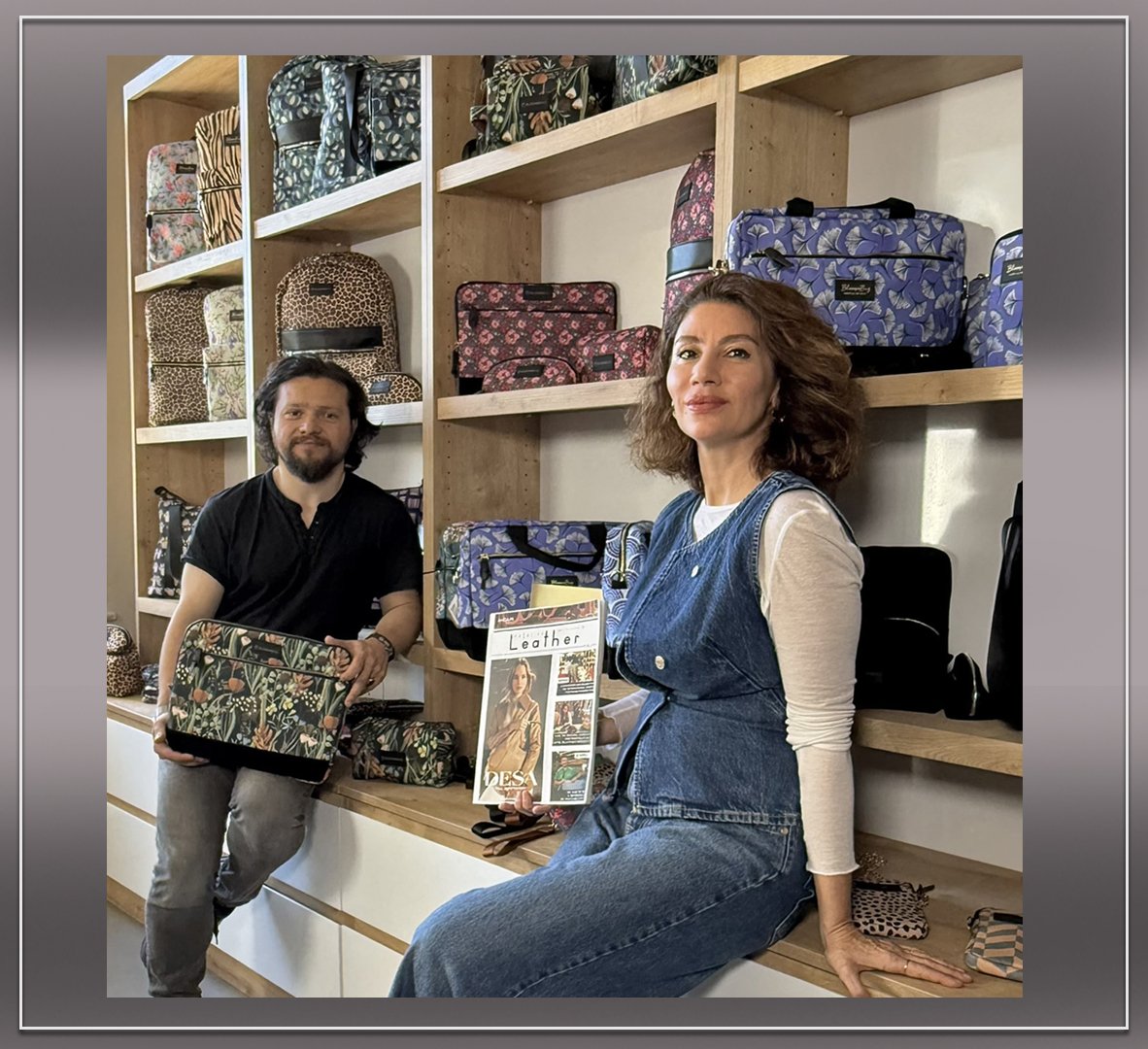
EDITOR: This was a beautiful journey, and the pandemic period wasn’t really a pause — it was a decision-making stage… almost a pivot to new products. That reminds me — you mentioned earlier about patterns. Do you design your own patterns? Because they are very colorful and distinctive. Is there a story behind them?
Thank you for asking — it’s a delightful question, and I always enjoy answering it. Yes, there is indeed a story. The design and pattern journey is intertwined with the brand name, BLOOMIN.
As I mentioned, after gaining certain foundations in the corporate world, I had this dream and desire in mind. But life led me to a difficult point — I had to take a break from corporate life due to a health issue, and during that time, I lost my mother. Such losses make you realize that, while we may all have career goals and income targets, in the end, we live for the health, peace, and happiness of our loved ones.
In such challenging moments, you question what really matters. I was at a crossroads — to give up or to move forward with full force. I chose to move forward.
Living in a city as tough as Istanbul, I realized that many women in the workforce — from executives to self-sufficient professionals — had been overlooked when it came to something as basic as a laptop bag.
EDITOR: Was this perhaps due to a male-centered design approach?
I wouldn’t call it sexist — I always try to stand on the side of equality — but there was certainly an imbalance. Women’s needs had been ignored. Women should be able to say, “I’m here, and my needs and demands are here too,” in all areas of life. I am against silencing that voice.
So BLOOMIN — meaning “to flower” — became not only a personal decision to keep going in life, but also a symbolic motivation for working women to keep standing strong. It means to bloom again from a bud, to be vibrant and colorful.
Our slogan is “happy and stylish bags.” People ask me, “What does a happy bag mean?” I tell them: when you hold it, it should fill you with a positive feeling, bring you joy. It should make you happy on your way to work and keep making you happy as you carry it through life.
EDITOR: Sorry to interrupt — but the colors already convey that happiness… The name fits perfectly.
Great, definitely… If I got you, as a man, to say that, then we’re in the right place! Our patterns, colors, name, and story — along with my own personal journey — have all been built around that same spirit.
Our aim, both socially and commercially, is to support women in standing on their own feet, gaining economic independence, and making their own choices — all while creating a more colorful world. I hope we can continue to spread that message and inspire young women.
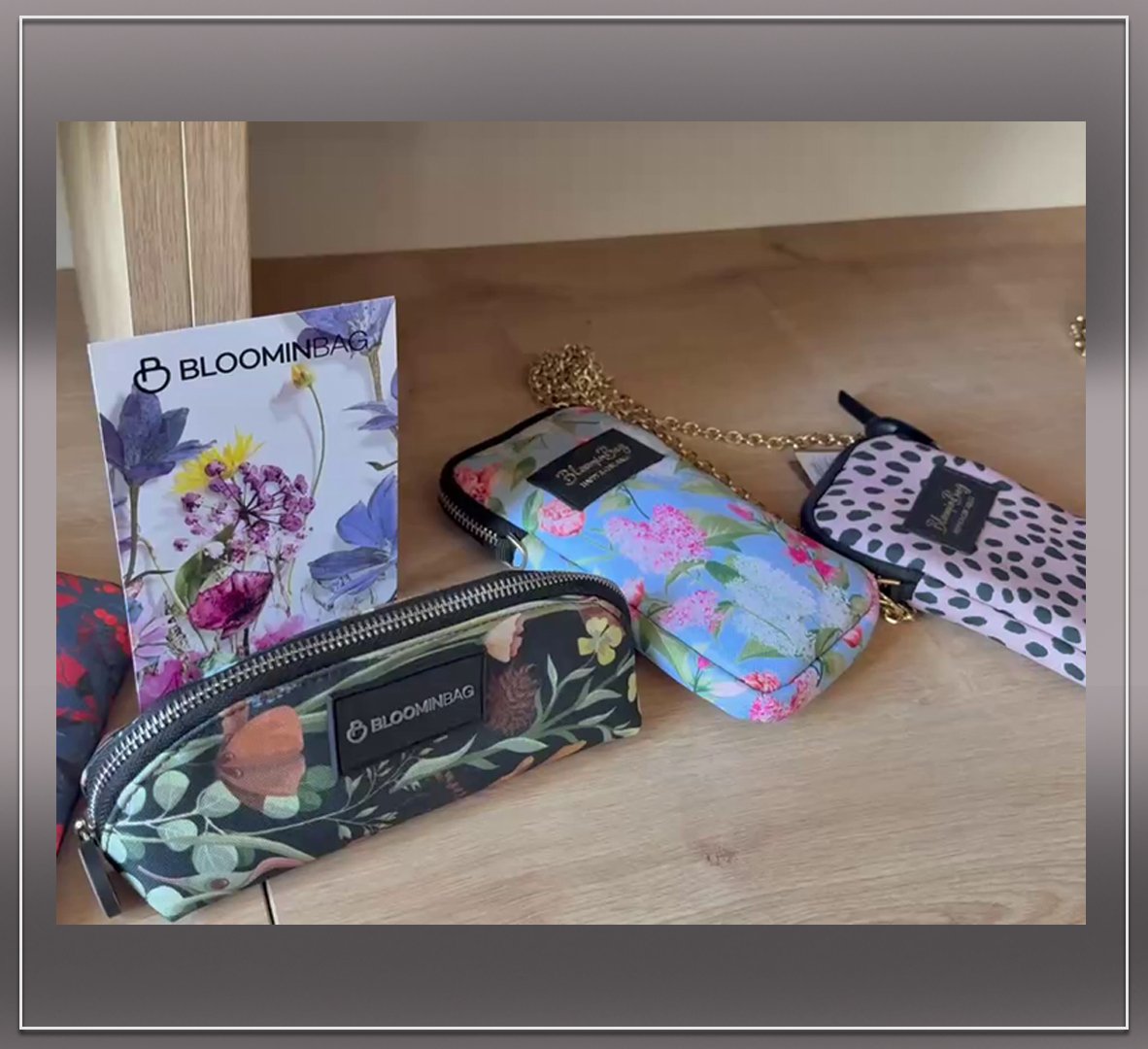
EDITOR: There’s great potential for entrepreneurship in Türkiye, and perhaps young people can be inspired by even a single sentence of what you’ve said. Could you tell us about your current position?
Of course. Going back to the brand’s founding story — after ten years in corporate life, handling large financial budgets, I realized I knew nothing about the basic mechanics of running my own business. You might manage millions for someone else, but not know how to issue an invoice or handle a small bank deposit.
When I started, I had very little capital. My business model was simple: produce as many bags as my budget allowed — say, 100 bags — sell them at a margin, and use the profit to produce more. Like basic elementary school math. But once in the business, I discovered that real-world trade doesn’t work that way. There are countless hidden costs, and sales aren’t always straightforward.
So yes, financial management is vital, but it’s only one part. When finances get tight, you must find other ways forward — through marketing strength, foreign connections, relationship-building. All of these combined create brand management, company management, and resilience.
After eight years, we are now at a point where we try to manage all these aspects together. Türkiye’s economy is challenging — and getting more so each year. Managing finances, stock, brand, and trade together while maintaining the spirit of the brand is a constant climb.
EDITOR: Regarding design — when creating your designs, do you focus on unique collections, or do you make women-specific or fashion-oriented designs?
On the design side, the story began entirely with how I wanted to shape my brand’s DNA. As I mentioned, “BLOOM” means to flower, and we started with floral patterns — but not just any flowers. We have a signature peony flower called “Peroni” with a specific color code, and that became the starting point for our collections.
For later collections, of course, sales trends and customer feedback also guide us. One of the most important factors in the design process is feedback from our customers — and we monitor this very closely. Since we are creating products for women, and women mean fashion, we follow global fashion trends closely. We study major international brands and the season’s trends, and if possible, we design patterns or produce fabrics from scratch in line with them.
So the flow of business and sales, combined with our brand’s core DNA, determines our collections — along with the preferences of our “bloomers.”
This brings us to your question about why we, as a fabric bag brand, are collaborating with a leather goods channel… I’ll explain.
Since the pandemic, BLOOMIN BAG has been present on all major marketplaces in Türkiye, and we have gained significant experience there. But now we also want to operate abroad — to promote, display, and sell our brand internationally. We are very connected to the global scene, closely following trends, and we have many foreign customers.
When entering foreign markets, we produce a niche product: fabric bags in many versions — laptop bags, backpacks, belt bags, shoulder bags, makeup pouches, small clutches, etc. But alongside fabric, we have been receiving serious demand from abroad for leather products.
Because Turkish leather and its quality are well-known, we partnered with the BOULETTA brand, which has long produced leather goods and sells them in many international markets. In Türkiye, where we are strong in online marketplaces, we will sell their products under the BOULETTA umbrella — and we will present the BLOOMIN BAG range not only in fabric but also in fabric + leather.
From the start, we have been an eco-friendly brand. All our fabrics are recycled, printed with anti-carcinogenic dyes. Our materials are always anti-carcinogenic, and for leather, we only use hides from animals slaughtered for meat consumption. We pay great attention to this — we are not destroying nature; on the contrary, we aim to strengthen sustainability by making use of these hides. We incorporate them into our collections in the BLOOMIN BAG style and will be selling them on strong marketplaces abroad in the coming months.
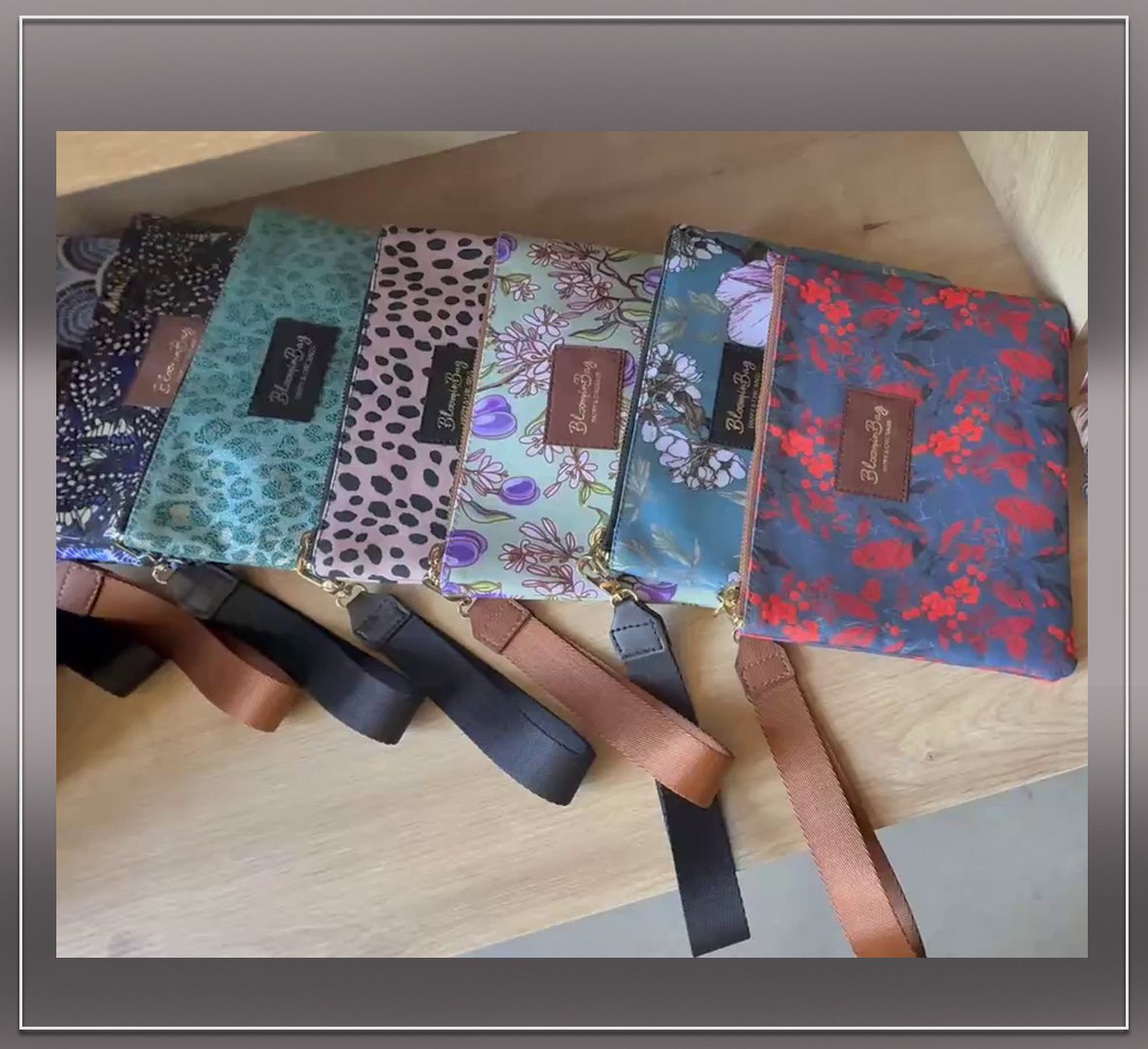
EDITOR: Real leather is important, and you’ve emphasized that. But you also have vegan products, correct?
Yes, we do.
EDITOR: You sell your products both on the BLOOMIN BAG website and through partner stores, right?
Yes, that’s correct.
EDITOR: Regarding leather products, what kinds of innovations or designs will you make in the future?
BLOOMIN BAG aims to make women feel happy when carrying our bags. That’s our main goal. On the fabric side, we’ve achieved this with patterns and colors. In leather, people often ask what we’ll do differently. Since we’re new to leather, our customers’ feedback will shape our direction. But my personal vision and our brand strategy are to maintain that feeling of joy, elegance, and beauty that comes from being a woman.
Leather, as a material, already conveys that sense of quality and exclusivity. With minimal touches or subtle accessories, it can become something truly exceptional. Unlike the fabric side, where we use many patterns and colors, with leather we prefer to intervene as little as possible to highlight its beauty. Our motto here is “simple yet elegant” — both in product design and in keeping the leather’s own character intact.
We will continue creating simple yet elegant designs that make women’s lives more practical and help them feel better and happier.
EDITOR: What advice would you give to young fashion designers?
To young designers — or to all young people — I’d say this: we’ve been in both the business and brand/trade sides of things for some time now. From all these experiences, my main advice is that a business is not just about designing or producing a product. There are many dynamics involved. The founder, designer, or manufacturer must know, master, and manage these dynamics.
You might have a brilliant design idea, but if you can’t reflect its cost into the selling price, it will never come to life. This is just one example — but the same applies to many other areas of the business. Think in 360 degrees, talk to experienced people, and factor in every aspect.
By “know,” I don’t mean you have to already know everything — none of us do when we’re young. Experience comes from living it. My greatest advantage was living in a big city like Istanbul, because I started knowing nothing but was always open to learning and asking questions.
I joined as many networks as I could — women’s associations like KAGİDER, chambers like ITO — and every person I met added something to me. Sometimes it was a solution to a problem I was stuck on, other times it was an unexpected opportunity. Even casual meetings over tea could later turn into significant support.
Information grows and changes rapidly, and you can only access it by being in different places with different people. Of course, desk research and design work are important — but sometimes you have to roll up your sleeves and get hands-on, meet people who’ve been down the same roads you’re taking, and learn from them.
So my advice to young people is: build your network, research, talk, develop yourself in every way, don’t get stuck on just one aspect of the work, think in 360 degrees, be resilient. We live in a difficult country, and the world is also going through a challenging period. Nothing progresses easily — and those who give up in the face of difficulties won’t last. The ones who persist are the ones whose names, brands, and businesses get talked about.
So don’t give up — just learn how to overcome the challenges, and keep going with determination and motivation.
EDITOR: Thank you very much, Mrs. Neslihan. We wish you continued success in your business life. I’m sure you will reach a strong position globally in the future.
Thank you very much for the invitation and for giving me the opportunity to share this journey. I truly appreciate your time.
